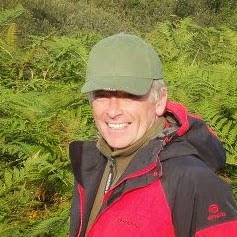Stephen L Marsh
age ~65
from Ashburnham, MA
- Also known as:
-
- Steve L Marsh
- Phone and address:
-
380 Lakeshore Dr, South Ashburnham, MA 01430
978 827-6687
Stephen Marsh Phones & Addresses
- 380 Lakeshore Dr, Ashburnham, MA 01430 • 978 827-6687
- 41 Lakeshore Dr, Ashburnham, MA 01430 • 978 827-6687 • 978 827-9956
- 380 Lake Rd, Ashburnham, MA 01430 • 978 827-6687 • 978 827-9956
- Sterling, MA
- Townsend, MA
- 41 Lakeshore Dr, Ashburnham, MA 01430 • 978 827-6687
Work
-
Company:First presbyterian church of the covenant
-
Address:250 W 7Th St, Kates Corner, MA 01824
-
Phones:978 250-7900
-
Position:Pastor
-
Industries:Religious Organizations
Education
-
Degree:Graduate or professional degree
Specialities
Environment • Energy & Product Regulation • California Environmental Law Policy • Proposition 65 • CERCLA • Remediation and Brownfield Redevelopment • Chemicals • Pesticides and Product Regulation • International • Defective and Dangerous Products • Insurance • Litigation • Environmental Law • Corporate & Incorporation • Real Estate
Wikipedia References

Stephen Marsh
Work:
Position:
Engineer
Education:
Specialty:
Musical composer
Skills & Activities:
Activity:
Films
Skill:ELF
Award:Grammy Award
Us Patents
-
Fuel Cell And Power Chip Technology
view source -
US Patent:6815110, Nov 9, 2004
-
Filed:Sep 7, 2001
-
Appl. No.:09/949301
-
Inventors:Stephen A. Marsh - Carlisle MA
-
Assignee:Integrated Fuel Cell Technologies, Inc. - Bedford MA
-
International Classification:H01M 810
-
US Classification:429 30, 429 32, 429 34, 429 38, 429 35, 429 36
-
Abstract:A fuel cell is disclosed which is formed on a semiconductor wafer by etching channel in the wafer and forming a proton exchange membrane PEM barrier in the etched channel. The barrier divides the channel into two. A hydrogen fuel is admitted into one of the divided channels and an oxidant into the other reacts with a catalyst formed on an anode electrode at the hydrogen side of the channel to release hydrogen ions (protons) which are absorbed into the PEM. The protons migrate through the PEM and recombine with return hydrogen electrons on a cathode electrode on the oxygen side of the PEM and the oxygen to form water.
-
Fuel Cell And Power Chip Technology
view source -
US Patent:6991866, Jan 31, 2006
-
Filed:Sep 29, 2004
-
Appl. No.:10/953038
-
Inventors:Stephen A. Marsh - Carlisle MA, US
-
Assignee:Integrated Fuel Cell Technologies, Inc. - Bedford MA
-
International Classification:H01M 8/10
-
US Classification:429 30, 429 32, 429 34
-
Abstract:A fuel cell is disclosed which is formed on a semiconductor wafer by etching channel in the wafer and forming a proton exchange membrane PEM barrier in the etched channel. The barrier divides the channel into two. A hydrogen fuel is admitted into one of the divided channels and an oxidant into the other. The hydrogen reacts with a catalyst formed on an anode electrode at the hydrogen side of the channel to release hydrogen ions (protons) which are absorbed into the PEM. The protons migrate through the PEM and recombine with return hydrogen electrons on a cathode electrode on the oxygen side of the PEM and the oxygen to form water.
-
Fuel Cell And Power Chip Technology
view source -
US Patent:7029779, Apr 18, 2006
-
Filed:Nov 9, 2004
-
Appl. No.:10/985736
-
Inventors:Stephen A. Marsh - Carlisle MA, US
-
Assignee:Integrated Fuel Cell Technologies, Inc. - Burlington MA
-
International Classification:H01M 8/10
H01M 8/02 -
US Classification:429 30, 429 32, 429 34
-
Abstract:A fuel cell is disclosed which is formed on a semiconductor wafer by etching channel in the wafer and forming a proton exchange membrane PEM barrier in the etched channel. The barrier divides the channel into two. A hydrogen fuel is admitted into one of the divided channels and an oxidant into the other. The hydrogen reacts with a catalyst formed on an anode electrode at the hydrogen side of the channel to release hydrogen ions (protons) which are absorbed into the PEM. The protons migrate through the PEM and recombine with return hydrogen electrons on a cathode electrode on the oxygen side of the PEM and the oxygen to form water.
-
Self-Regulating Gas Generator And Method
view source -
US Patent:8172912, May 8, 2012
-
Filed:Nov 15, 2004
-
Appl. No.:10/989116
-
Inventors:Stephen A. Marsh - Carlisle MA, US
Donald M. Parker - Marblehead MA, US
Peter N. Pintauro - Shaker Heights OH, US -
Assignee:Encite, LLC - Burlington MA
-
International Classification:B01J 7/00
H01M 8/06
C01B 3/36
C01B 6/24
C01B 3/00 -
US Classification:48 61, 48197 R, 423644, 4236582
-
Abstract:A self-regulating gas generator that, in response to gas demand, supplies and automatically adjusts the amount of gas (e. g. , hydrogen or oxygen) catalytically generated in a chemical supply chamber from an appropriate chemical supply, such as a chemical solution, gas dissolved in liquid, or mixture. The gas generator may employ a piston, rotating rod, or other element(s) to expose the chemical supply to the catalyst in controlled amounts. The gas generator may be used to provide gas for various gas consuming devices, such as a fuel cell, torch, or oxygen respiratory devices.
-
Methods Of Operating Fuel Cells
view source -
US Patent:8431281, Apr 30, 2013
-
Filed:Jul 28, 2008
-
Appl. No.:12/220787
-
Inventors:Stephen A. Marsh - Carlisle MA, US
-
Assignee:Encite, LLC - Burlington MA
-
International Classification:H01M 8/00
-
US Classification:429431, 429300
-
Abstract:A fuel cell is disclosed which is formed on a semiconductor wafer by etching channel in the wafer and forming electronics on the substrate electronically coupled to the fuel cell that controls generation of power by the fuel cell through electrical communication with the fuel cell. A hydrogen fuel is admitted into one of the divided channels and an oxidant into the other. The hydrogen reacts with a catalyst formed on an anode electrode at the hydrogen side of the channel to release hydrogen ions (protons) which are absorbed into the PEM. The protons migrate through the PEM and recombine with return hydrogen electrons on a cathode electrode on the oxygen side of the PEM and the oxygen to form water.
-
Power Cell And Power Chip Architecture
view source -
US Patent:8518594, Aug 27, 2013
-
Filed:Mar 2, 2007
-
Appl. No.:11/713459
-
Inventors:Stephen A. Marsh - Carlisle MA, US
-
Assignee:Encite, LLC - Burlington MA
-
International Classification:H01M 8/00
-
US Classification:429446, 429492
-
Abstract:A power cell comprises a membrane with a first side and a second side. The membrane has a geometric structure encompassing a volume. The power cell also has a cover that is coupled to the membrane to separate the first flow path from the second flow path at the membrane. In the power cell, first and second catalyst is in gaseous communication with respective first flow path and second flow path and in ionic communication with respective first and second sides of the membrane. Furthermore, a first electrode is electrically coupled to the first catalyst on the first side of the membrane, and a second electrode is electrically coupled to the second catalyst on the second side of the membrane. In another embodiment, the power cell further includes a substrate on which the membrane is coupled.
-
Gas Storage System
view source -
US Patent:8563192, Oct 22, 2013
-
Filed:Dec 22, 2009
-
Appl. No.:12/645263
-
Inventors:Stephen A. Marsh - Carlisle MA, US
Donald M. Parker - Marblehead MA, US
William J. Grande - Pittsford NY, US -
Assignee:Encite LLC - Burlington MA
-
International Classification:H01M 8/24
H01M 8/04 -
US Classification:429444, 429513
-
Abstract:Among other things, a gas storage system includes a group of capsules and an activation element coupled to the group. The group of capsules are formed within a substrate and contain gas stored at a relatively high pressure compared to atmospheric pressure. The activation element is configured to deliver energy in an amount sufficient to cause at least one of the capsules to release stored gas.
-
Methods Of Operating Fuel Cells
view source -
US Patent:20060110636, May 25, 2006
-
Filed:Dec 29, 2005
-
Appl. No.:11/322760
-
Inventors:Stephen Marsh - Carlisle MA, US
-
International Classification:H01M 8/00
H01M 6/14 -
US Classification:429013000, 429300000
-
Abstract:A fuel cell is disclosed which is formed on a semiconductor wafer by etching channel in the wafer and forming electronics on the substrate electronically coupled to the fuel cell that controls generation of power by the fuel cell through electrical communication with the fuel cell. A hydrogen fuel is admitted into one of the divided channels and an oxidant into the other. The hydrogen reacts with a catalyst formed on an anode electrode at the hydrogen side of the channel to release hydrogen ions (protons) which are absorbed into the PEM. The protons migrate through the PEM and recombine with return hydrogen electrons on a cathode electrode on the oxygen side of the PEM and the oxygen to form water.
Lawyers & Attorneys

Stephen Marsh - Lawyer
view sourceOffice:
Dentons US LLP
Specialties:
Environment
Energy & Product Regulation
California Environmental Law Policy
Proposition 65
CERCLA
Remediation and Brownfield Redevelopment
Chemicals
Pesticides and Product Regulation
International
Defective and Dangerous Products
Insurance
Litigation
Environmental Law
Corporate & Incorporation
Real Estate
Energy & Product Regulation
California Environmental Law Policy
Proposition 65
CERCLA
Remediation and Brownfield Redevelopment
Chemicals
Pesticides and Product Regulation
International
Defective and Dangerous Products
Insurance
Litigation
Environmental Law
Corporate & Incorporation
Real Estate
ISLN:
905153184
Admitted:
1984
University:
Florida State University, 1974; Florida State University, 1974; Wayne State University, B.A., 1974
Law School:
University of Michigan Law School, J.D., 1984
Wikipedia

Steve Marsh (comedian)
view sourceStephen "Steve" Marsh (born 1979) is a British actor and co-host of the CBeebies programme Big Cook, Little Cook and is also co-host of Space Hoppers. ...
Medicine Doctors

Stephen Saunders Marsh
view sourceSpecialties:
Family Medicine
Family Medicine
Hospice & Palliative Medicine
Family Medicine
Hospice & Palliative Medicine
Education:
Wake Forest University (1986)
Name / Title
Company / Classification
Phones & Addresses
Pastor
First Presbyterian Church of The Covenant
Religious Organizations
Religious Organizations
250 W 7Th St, Kates Corner, MA 01824
President
TRE' AMICI, INC
360 Mass Ave, Acton, MA 01720
529 King St, Littleton, MA 01460
529 King St, Littleton, MA 01460
Managing
Sem Management Solutions LLC
Pastor
First Presbyterian Church of The Covenant
250 W 7 St, Chelmsford, MA 01824
978 250-7900
978 250-7900
Executive
Tre Amici
Business Services at Non-Commercial Site · Eating Place
Business Services at Non-Commercial Site · Eating Place
529 King St, Littleton, MA 01460
978 339-5275
978 339-5275
ASCNET CHAPTER OF SOUTHWEST OHIO
Resumes

Stephen Marsh
view source
Stephen Marsh
view source
Stephen Marsh
view sourceFlickr
Classmates

Stephen Marsh
view sourceSchools:
Newport High School Newport VT 1962-1966
Community:
Earl Mahoney, Jason Arkin, Joe Berthiaume, Joan Ramsay

Stephen Marsh
view sourceSchools:
Clifton-Fine High School Star Lake NY 1964-1968
Community:
Wayne Hubbard, Roger Disotell

Stephen Marsh
view sourceSchools:
Valley Elementary School Poway CA 1962-1964, Fairview Intermediate School Lafayette CA 1967-1969
Community:
John Stewart, Ronald Wald

Stephen Marsh
view sourceSchools:
St. Agnes High School New Waterford Swaziland 1954-1958
Community:
Wayne Neil, Trena Mary, James Fraser, Josie Kliza

Stephen Marsh
view sourceSchools:
Westwood Junior High School Winter Haven FL 1969-1971
Community:
Meghan L

Stephen Marsh
view sourceSchools:
Warren Consolidated High School Tiltonsville OH 1954-1958
Community:
Chris Moffo, Donna Cloud, Robert Logsdon, Theresa Walker, Karen Tagliente

Stephen Marsh
view sourceSchools:
Lyons High School Lyons KS 2002-2006
Community:
Danielle Cain, Andrew Wedel, Zach Whitebird, Dawn Thompson, Jacqlyn Kreis, Amber Whittier, Andrea Jaime, Chance Haug, Jeremiah Starnes, Tony Heenan

Stephen Marsh (Stephen Ma...
view sourceSchools:
Lake Worth Christian High School Lantana FL 1998-2002
Community:
Betsy Van Vels, Todd Metcalfe, Jodie Bell, Sharon Hope
Plaxo

Stephen Marsh
view source
Stephen Marsh
view sourceI'm a Production Designer in the Motion Picture and Television Industry.

Stephen Marsh
view sourceFlorida

Stephen Marsh
view sourcecsoms
News

Ga. executes Davis; supporters claim injustice
view source- His attorney Stephen Marsh said Davis would have spent part of Wednesday taking a polygraph test if pardons officials had taken his offer seriously. But they, too, said they wouldn't reconsider their decision. Georgia's governor does not have the power to grant condemned inmates clemency.
- Date: Sep 22, 2011
- Source: Google

No polygraph for Ga. inmate as execution nears
view source- Defense lawyer Stephen Marsh told The Associated Press that the Georgia Department of Corrections denied his request to allow Davis to take a polygraph test. Marsh had said he hoped the polygraph would convince the state pardons board to reconsider a decision against clemency.Attorney Stephen Marsh said he had asked state prisons officials and the pardons board if they would allow a polygraph test. A prisons spokeswoman said she was unaware of the request and the pardons board didn't immediately respond.
- Date: Sep 21, 2011
- Source: Google

Last-minute push to save Troy Davis is promised
view source- "We believe that we've established substantial doubt in this case," said Stephen Marsh, Davis' defense attorney. "And given the level of doubt that exists in this case, we believe that an execution is simply not appropriate."
- Date: Sep 21, 2011
- Category: U.S.
- Source: Google

Pardons board weighing clemency for Troy Davis
view source- hey insisted the case had too much conflicting evidence to be a death penalty case. We are thankful that the board provided us with an opportunity to present our case today, Davis attorney Stephen Marsh said after leaving the hearing. We believe that we have established substantial doubt in this
- Date: Sep 20, 2011
- Category: U.S.
- Source: Google

Troy Davis clemency bid denied on execution eve
view source- The Board of Pardons and Paroles on Tuesday rejected Davis' request for clemency after hearing hours of testimony from his supporters and prosecutors. That's according to two of Davis' lawyers, Stephen Marsh and Brian Kammer. There was no immediate word from the board.
- Date: Sep 20, 2011
- Category: World
- Source: Google

Ga. Board Considers Execution Stay
view source- Inside the closed-door meeting, a parade of attorneys and supporters asked the five-member board to spare Davis' life. Defense attorney Stephen Marsh said the legal team told the board there was too much substantial doubt about his guilt to allow the execution to go forward. Prosecutors were expecte
- Date: Sep 19, 2011
- Category: U.S.
- Source: Google
Googleplus

Stephen Marsh
Work:
Stephen Marsh Photography - Owner/Photographer
Education:
MWPAI-MVCC-EBI

Stephen Marsh
Work:
British Divers Marine Life Rescue

Stephen Marsh
Education:
Haywood secondry modern school

Stephen Marsh

Stephen Marsh

Stephen Marsh

Stephen Marsh

Stephen Marsh
Myspace
Youtube

Akintunde Stephen Marsh
view source
Stephen K. Marsh
view source
Stephen Marsh
view source
Trevor Stephen Marsh
view source
Stephen R Marsh
view source
Stephen E Marsh
view source
Stephen Efc Marsh
view source
Stephen J Marsh
view sourceGet Report for Stephen L Marsh from Ashburnham, MA, age ~65


















